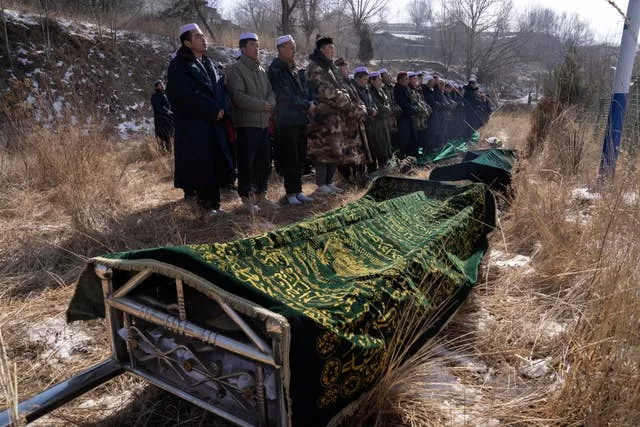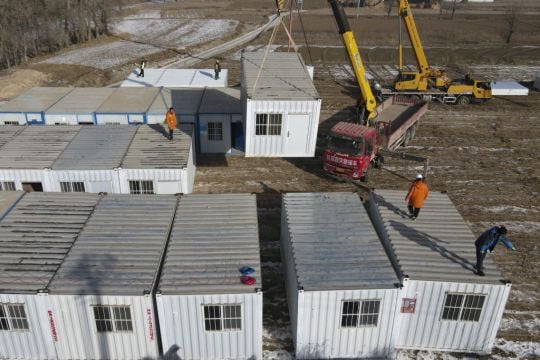Hundreds of temporary one-room housing units were set up on Thursday in northwest China for survivors of an earthquake that destroyed more than 14,000 homes and killed at least 146 people, state media reported.
The death toll rose by nine as search teams dug through heavy mudslides that had inundated two villages, a city official in Qinghai province said on Friday morning. Three people remained missing in the mudslides.
State broadcaster CCTV showed footage of cranes lifting white, box-like housing units and lining them up in an open field in Meipo, a village in Gansu province.
About 260 had been erected, and the total in the village was expected to reach 500 across nine sites by Friday morning.

The arrival of the pre-fabricated units was a sign that many of the more than 87,000 people resettled after the Monday night earthquake may be homeless for some time.
Many have been enduring temperatures well below freezing in flimsier tent-like units with blue plastic sheeting on the outside and a quilted cotton lining inside.
An assessment of the houses in a village visited by the Associated Press on Wednesday found that 90% were not safe to live in, experts told CCTV in an online report.
Some of the homes in Yangwa village appear fine, but they have structural damage that make them unsafe, the experts said. For those that can be repaired, the work may have to wait until next year, because the soil is frozen.
The death toll included 113 people in Gansu and another 22 people in neighbouring Qinghai. Nearly 1,000 were reported injured.
The magnitude 6.2 quake struck in a mountainous region on the Gansu side of the boundary between the two provinces and about 1,300 kilometres (800 miles) southwest of Beijing, the Chinese capital.
Funerals have been held for the dead, some following the Muslim traditions of much of the population in the affected area.
The mud rose as high as three metres (10 feet) in the two villages in Qinghai province, leaving only the rooftops of some buildings showing. Search teams used excavators to dig through the thick sea of mud that covered roads, encased buildings and blocked entry points.
Experts quoted by CGTN, the Chinese state broadcaster’s international arm, said the earthquake liquefied underground sediment in the area, where the water table is relatively high.
At some point, the muddy sediment burst through the surface and flowed down a usually dry ditch into the villages.
Most of China’s earthquakes strike in the western part of the country, including Gansu, Qinghai, Sichuan and Yunnan provinces, as well as the Xinjiang region and Tibet. The latest quake was the deadliest one in the country in nine years.







